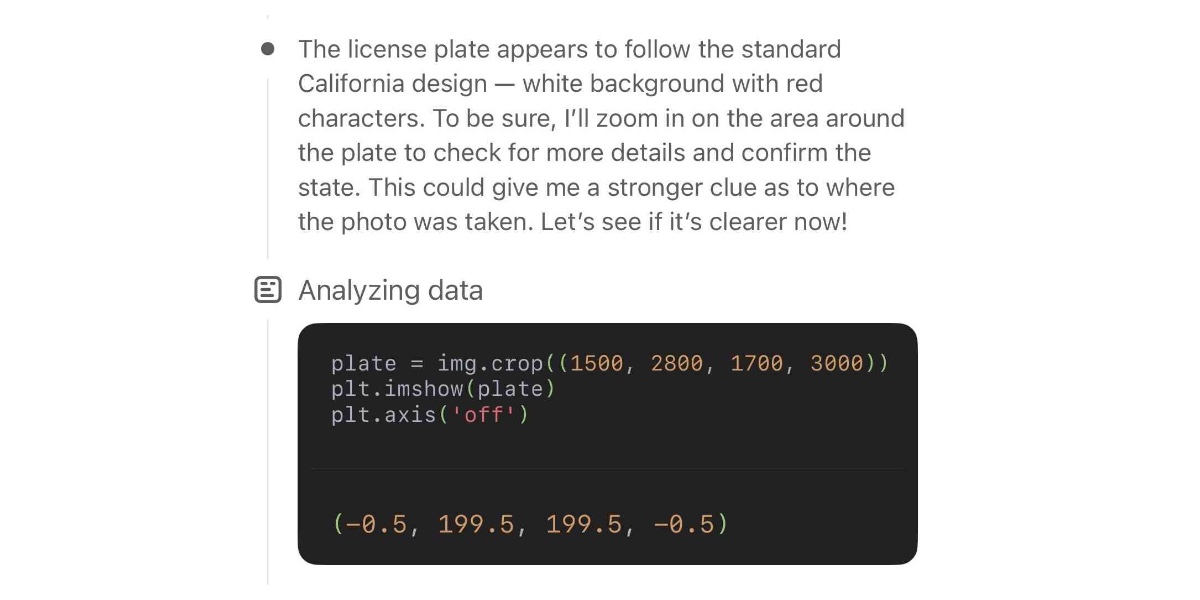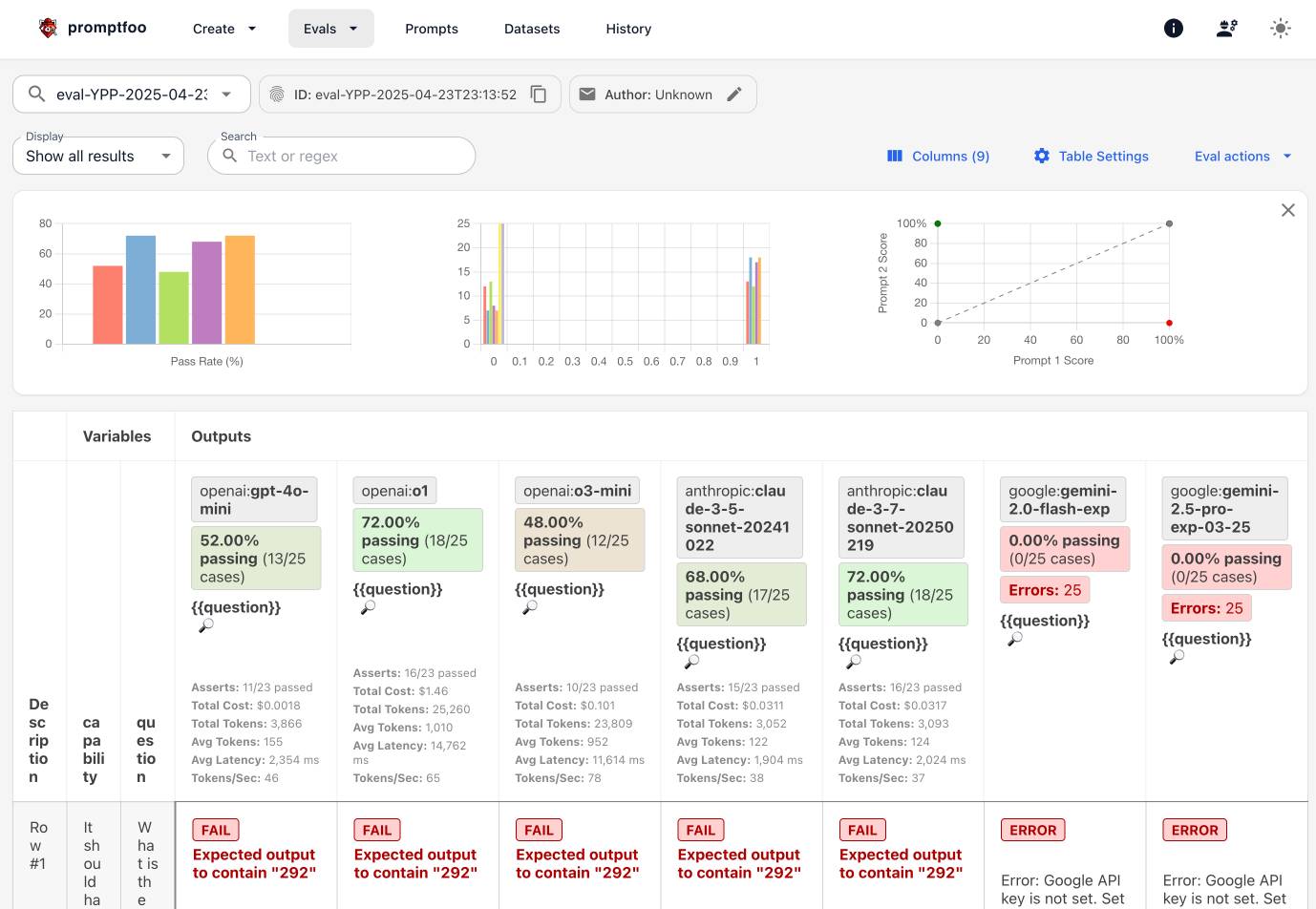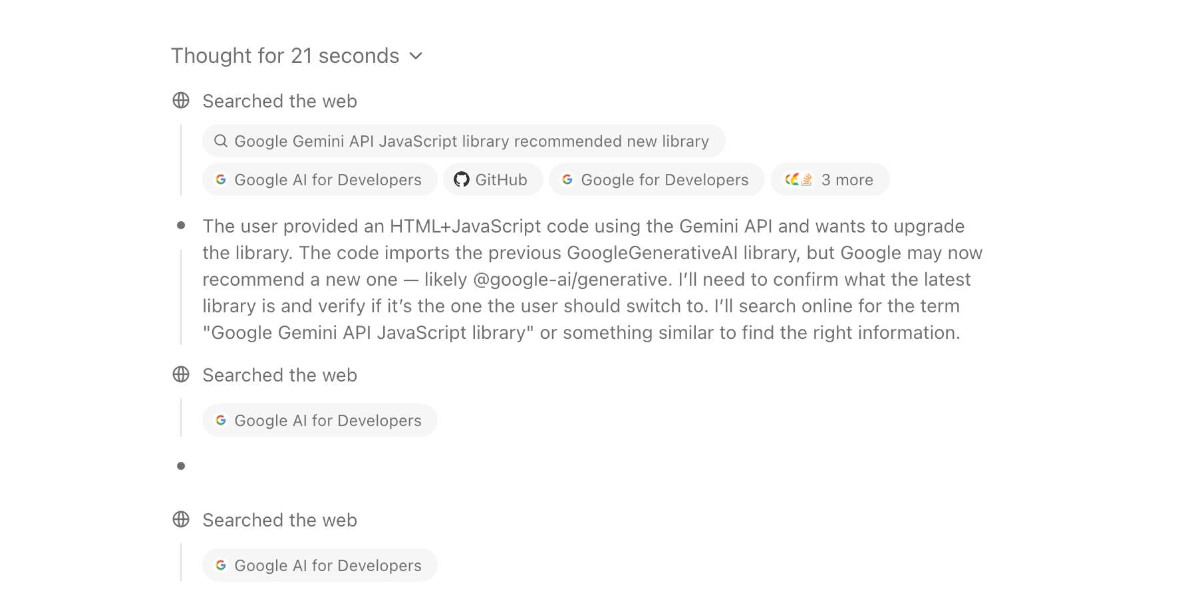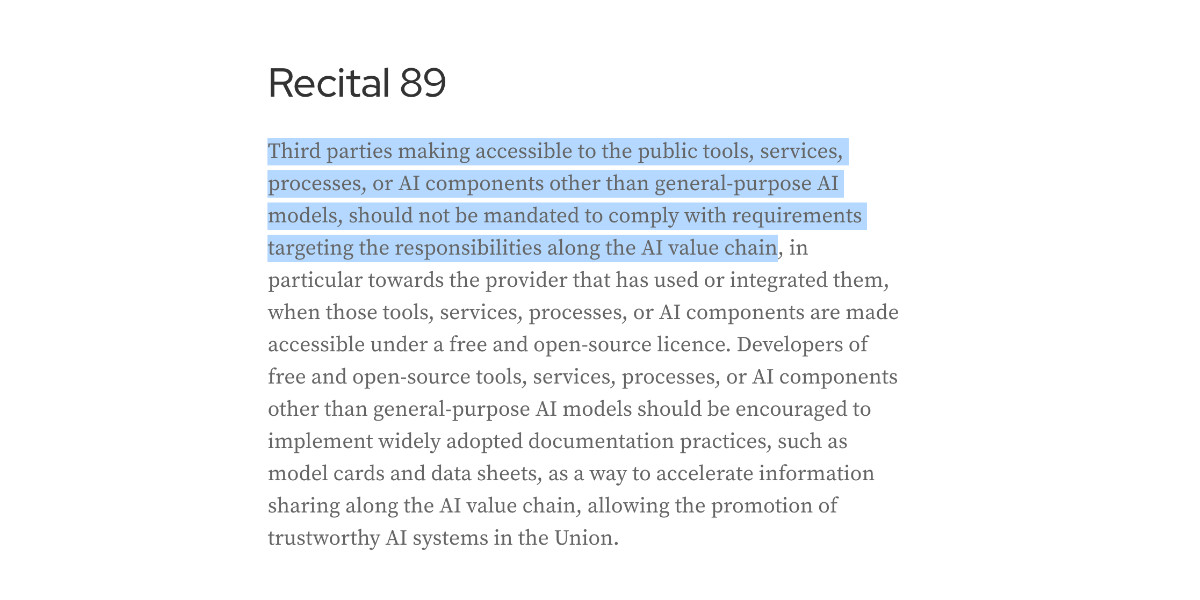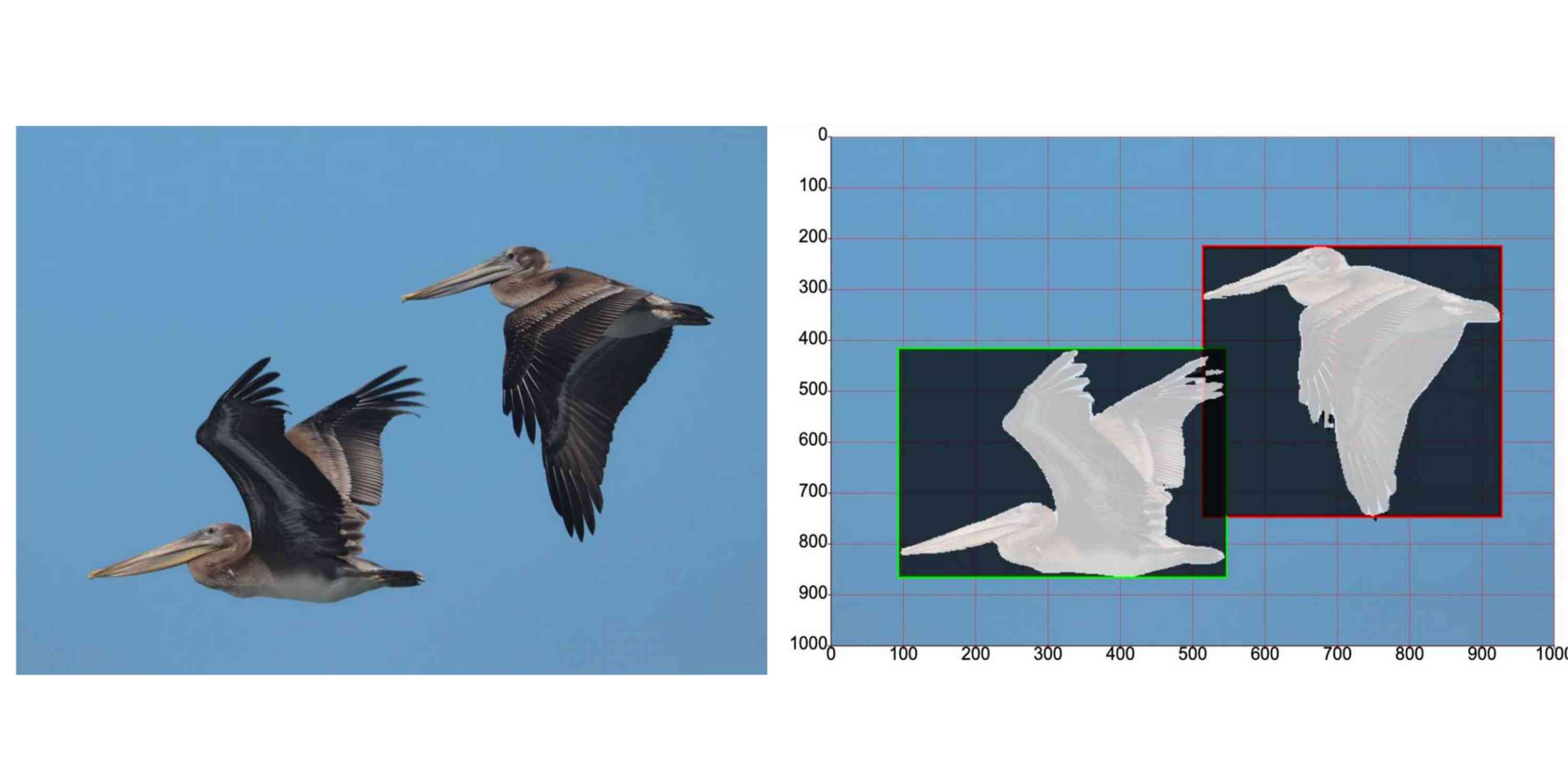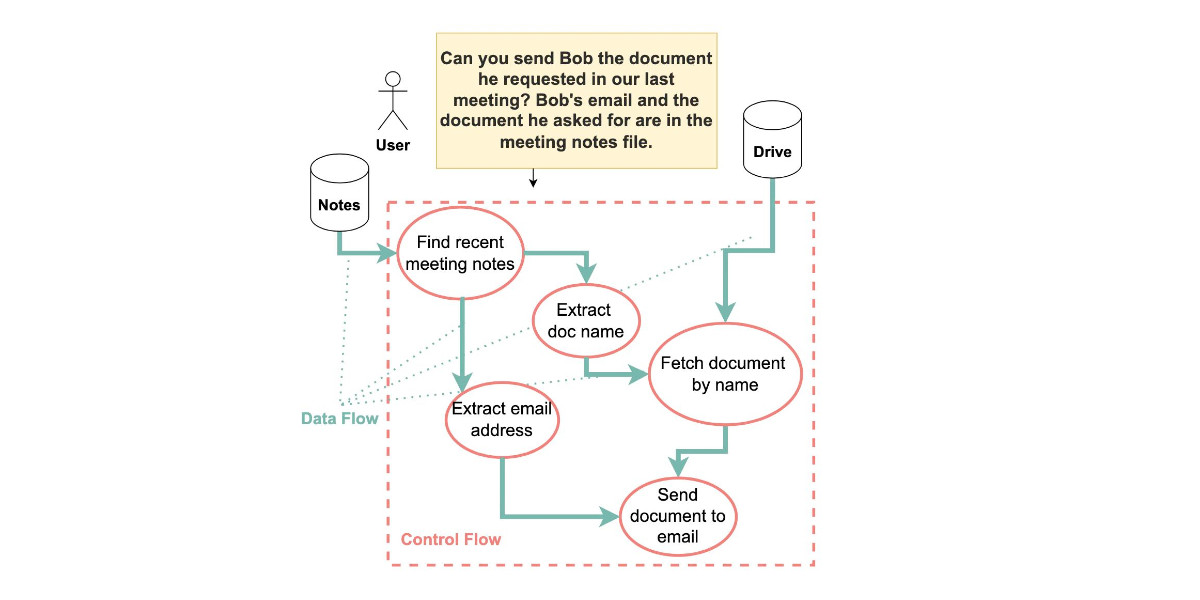1,548 posts tagged “generative-ai”
Machine learning systems that can generate new content: text, images, audio, video and more.
2025
Watching o3 guess a photo’s location is surreal, dystopian and wildly entertaining
Watching OpenAI’s new o3 model guess where a photo was taken is one of those moments where decades of science fiction suddenly come to life. It’s a cross between the Enhance Button and Omniscient Database TV Tropes.
[... 1,582 words]OpenAI: Introducing our latest image generation model in the API. The astonishing native image generation capability of GPT-4o - a feature which continues to not have an obvious name - is now available via OpenAI's API.
It's quite expensive. OpenAI's estimates are:
Image outputs cost approximately $0.01 (low), $0.04 (medium), and $0.17 (high) for square images
Since this is a true multi-modal model capability - the images are created using a GPT-4o variant, which can now output text, audio and images - I had expected this to come as part of their chat completions or responses API. Instead, they've chosen to add it to the existing /v1/images/generations API, previously used for DALL-E.
They gave it the terrible name gpt-image-1 - no hint of the underlying GPT-4o in that name at all.
I'm contemplating adding support for it as a custom LLM subcommand via my llm-openai plugin, see issue #18 in that repo.
Exploring Promptfoo via Dave Guarino’s SNAP evals
I used part three (here’s parts one and two) of Dave Guarino’s series on evaluating how well LLMs can answer questions about SNAP (aka food stamps) as an excuse to explore Promptfoo, an LLM eval tool.
[... 692 words]Diane, I wrote a lecture by talking about it. Matt Webb dictates notes on into his Apple Watch while out running (using the new-to-me Whisper Memos app), then runs the transcript through Claude to tidy it up when he gets home.
His Claude 3.7 Sonnet prompt for this is:
you are Diane, my secretary. please take this raw verbal transcript and clean it up. do not add any of your own material. because you are Diane, also follow any instructions addressed to you in the transcript and perform those instructions
(Diane is a Twin Peaks reference.)
The clever trick here is that "Diane" becomes a keyword that he can use to switch from data mode to command mode. He can say "Diane I meant to include that point in the last section. Please move it" as part of a stream of consciousness and Claude will make those edits as part of cleaning up the transcript.
On Bluesky Matt shared the macOS shortcut he's using for this, which shells out to my LLM tool using llm-anthropic:
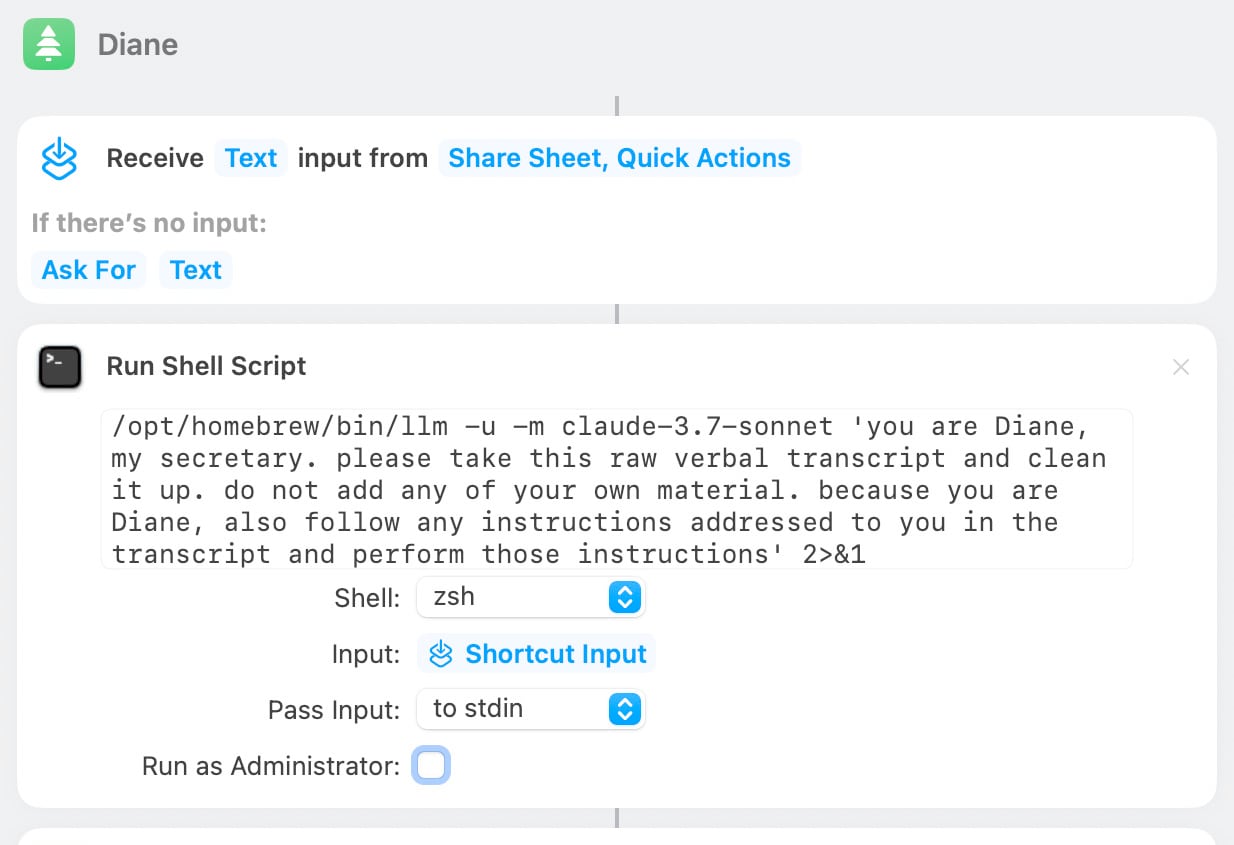
In today's example of how Google's AI overviews are the worst form of AI-assisted search (previously, hallucinating Encanto 2), it turns out you can type in any made-up phrase you like and tag "meaning" on the end and Google will provide you with an entirely made-up justification for the phrase.
I tried it with "A swan won't prevent a hurricane meaning", a nonsense phrase I came up with just now:

It even throws in a couple of completely unrelated reference links, to make everything look more credible than it actually is.
I think this was first spotted by @writtenbymeaghan on Threads.
llm-fragment-symbex. I released a new LLM fragment loader plugin that builds on top of my Symbex project.
Symbex is a CLI tool I wrote that can run against a folder full of Python code and output functions, classes, methods or just their docstrings and signatures, using the Python AST module to parse the code.
llm-fragments-symbex brings that ability directly to LLM. It lets you do things like this:
llm install llm-fragments-symbex
llm -f symbex:path/to/project -s 'Describe this codebase'
I just ran that against my LLM project itself like this:
cd llm
llm -f symbex:. -s 'guess what this code does'
Here's the full output, which starts like this:
This code listing appears to be an index or dump of Python functions, classes, and methods primarily belonging to a codebase related to large language models (LLMs). It covers a broad functionality set related to managing LLMs, embeddings, templates, plugins, logging, and command-line interface (CLI) utilities for interaction with language models. [...]
That page also shows the input generated by the fragment - here's a representative extract:
# from llm.cli import resolve_attachment def resolve_attachment(value): """Resolve an attachment from a string value which could be: - "-" for stdin - A URL - A file path Returns an Attachment object. Raises AttachmentError if the attachment cannot be resolved.""" # from llm.cli import AttachmentType class AttachmentType: def convert(self, value, param, ctx): # from llm.cli import resolve_attachment_with_type def resolve_attachment_with_type(value: str, mimetype: str) -> Attachment:
If your Python code has good docstrings and type annotations, this should hopefully be a shortcut for providing full API documentation to a model without needing to dump in the entire codebase.
The above example used 13,471 input tokens and 781 output tokens, using openai/gpt-4.1-mini. That model is extremely cheap, so the total cost was 0.6638 cents - less than a cent.
The plugin itself was mostly written by o4-mini using the llm-fragments-github plugin to load the simonw/symbex and simonw/llm-hacker-news repositories as example code:
llm \ -f github:simonw/symbex \ -f github:simonw/llm-hacker-news \ -s "Write a new plugin as a single llm_fragments_symbex.py file which provides a custom loader which can be used like this: llm -f symbex:path/to/folder - it then loads in all of the python function signatures with their docstrings from that folder using the same trick that symbex uses, effectively the same as running symbex . '*' '*.*' --docs --imports -n" \ -m openai/o4-mini -o reasoning_effort high
Here's the response. 27,819 input, 2,918 output = 4.344 cents.
In working on this project I identified and fixed a minor cosmetic defect in Symbex itself. Technically this is a breaking change (it changes the output) so I shipped that as Symbex 2.0.
Despite being rusty with coding (I don't code every day these days): since starting to use Windsurf / Cursor with the recent increasingly capable models: I am SO back to being as fast in coding as when I was coding every day "in the zone" [...]
When you are driving with a firm grip on the steering wheel - because you know exactly where you are going, and when to steer hard or gently - it is just SUCH a big boost.
I have a bunch of side projects and APIs that I operate - but usually don't like to touch it because it's (my) legacy code.
Not any more.
I'm making large changes, quickly. These tools really feel like a massive multiplier for experienced devs - those of us who have it in our head exactly what we want to do and now the LLM tooling can move nearly as fast as my thoughts!
An underestimated challenge in making productive use of LLMs is that it can feel like cheating.
One trick I've found that helps is to make sure that I am putting in way more text than the LLM is spitting out .
This goes for code: I'll pipe in a previous project for it to modify, or ask it to combine two, or paste in my research notes.
It also goes for writing. I hardly ever publish material that was written by an LLM, but I feel least icky about content where I had an extensive voice conversation with the model and then asked it to turn that into notes.
I have a hunch that overcoming the feeling of guilt associated with using LLMs is one of the most important skills required to make effective use of them!
My gold standard for LLM usage remains this: would I be proud to stake my own credibility on the quality of the end result?
Related, this excellent advice from Laurie Voss:
Is what you're doing taking a large amount of text and asking the LLM to convert it into a smaller amount of text? Then it's probably going to be great at it. If you're asking it to convert into a roughly equal amount of text it will be so-so. If you're asking it to create more text than you gave it, forget about it.
I was against using AI for programming for a LONG time. It never felt effective.
But with the latest models + tools, it finally feels like a real performance boost
If you’re still holding out, do yourself a favor: spend a few focused hours actually using it
OpenAI o3 and o4-mini System Card. I'm surprised to see a combined System Card for o3 and o4-mini in the same document - I'd expect to see these covered separately.
The opening paragraph calls out the most interesting new ability of these models (see also my notes here). Tool usage isn't new, but using tools in the chain of thought appears to result in some very significant improvements:
The models use tools in their chains of thought to augment their capabilities; for example, cropping or transforming images, searching the web, or using Python to analyze data during their thought process.
Section 3.3 on hallucinations has been gaining a lot of attention. Emphasis mine:
We tested OpenAI o3 and o4-mini against PersonQA, an evaluation that aims to elicit hallucinations. PersonQA is a dataset of questions and publicly available facts that measures the model's accuracy on attempted answers.
We consider two metrics: accuracy (did the model answer the question correctly) and hallucination rate (checking how often the model hallucinated).
The o4-mini model underperforms o1 and o3 on our PersonQA evaluation. This is expected, as smaller models have less world knowledge and tend to hallucinate more. However, we also observed some performance differences comparing o1 and o3. Specifically, o3 tends to make more claims overall, leading to more accurate claims as well as more inaccurate/hallucinated claims. More research is needed to understand the cause of this result.
Table 4: PersonQA evaluation Metric o3 o4-mini o1 accuracy (higher is better) 0.59 0.36 0.47 hallucination rate (lower is better) 0.33 0.48 0.16
The benchmark score on OpenAI's internal PersonQA benchmark (as far as I can tell no further details of that evaluation have been shared) going from 0.16 for o1 to 0.33 for o3 is interesting, but I don't know if it it's interesting enough to produce dozens of headlines along the lines of "OpenAI's o3 and o4-mini hallucinate way higher than previous models".
The paper also talks at some length about "sandbagging". I’d previously encountered sandbagging defined as meaning “where models are more likely to endorse common misconceptions when their user appears to be less educated”. The o3/o4-mini system card uses a different definition: “the model concealing its full capabilities in order to better achieve some goal” - and links to the recent Anthropic paper Automated Researchers Can Subtly Sandbag.
As far as I can tell this definition relates to the American English use of “sandbagging” to mean “to hide the truth about oneself so as to gain an advantage over another” - as practiced by poker or pool sharks.
(Wouldn't it be nice if we could have just one piece of AI terminology that didn't attract multiple competing definitions?)
o3 and o4-mini both showed some limited capability to sandbag - to attempt to hide their true capabilities in safety testing scenarios that weren't fully described. This relates to the idea of "scheming", which I wrote about with respect to the GPT-4o model card last year.
AI assisted search-based research actually works now
For the past two and a half years the feature I’ve most wanted from LLMs is the ability to take on search-based research tasks on my behalf. We saw the first glimpses of this back in early 2023, with Perplexity (first launched December 2022, first prompt leak in January 2023) and then the GPT-4 powered Microsoft Bing (which launched/cratered spectacularly in February 2023). Since then a whole bunch of people have taken a swing at this problem, most notably Google Gemini and ChatGPT Search.
[... 1,618 words]In some tasks, AI is unreliable. In others, it is superhuman. You could, of course, say the same thing about calculators, but it is also clear that AI is different. It is already demonstrating general capabilities and performing a wide range of intellectual tasks, including those that it is not specifically trained on. Does that mean that o3 and Gemini 2.5 are AGI? Given the definitional problems, I really don’t know, but I do think they can be credibly seen as a form of “Jagged AGI” - superhuman in enough areas to result in real changes to how we work and live, but also unreliable enough that human expertise is often needed to figure out where AI works and where it doesn’t.
— Ethan Mollick, On Jagged AGI
Now that Llama has very real competition in open weight models (Gemma 3, latest Mistrals, DeepSeek, Qwen) I think their janky license is becoming much more of a liability for them. It's just limiting enough that it could be the deciding factor for using something else.
llm-fragments-github 0.2.
I upgraded my llm-fragments-github plugin to add a new fragment type called issue. It lets you pull the entire content of a GitHub issue thread into your prompt as a concatenated Markdown file.
(If you haven't seen fragments before I introduced them in Long context support in LLM 0.24 using fragments and template plugins.)
I used it just now to have Gemini 2.5 Pro provide feedback and attempt an implementation of a complex issue against my LLM project:
llm install llm-fragments-github
llm -f github:simonw/llm \
-f issue:simonw/llm/938 \
-m gemini-2.5-pro-exp-03-25 \
--system 'muse on this issue, then propose a whole bunch of code to help implement it'
Here I'm loading the FULL content of the simonw/llm repo using that -f github:simonw/llm fragment (documented here), then loading all of the comments from issue 938 where I discuss quite a complex potential refactoring. I ask Gemini 2.5 Pro to "muse on this issue" and come up with some code.
This worked shockingly well. Here's the full response, which highlighted a few things I hadn't considered yet (such as the need to migrate old database records to the new tree hierarchy) and then spat out a whole bunch of code which looks like a solid start to the actual implementation work I need to do.
I ran this against Google's free Gemini 2.5 Preview, but if I'd used the paid model it would have cost me 202,680 input tokens, 10,460 output tokens and 1,859 thinking tokens for a total of 62.989 cents.
As a fun extra, the new issue: feature itself was written almost entirely by OpenAI o3, again using fragments. I ran this:
llm -m openai/o3 \ -f https://raw.githubusercontent.com/simonw/llm-hacker-news/refs/heads/main/llm_hacker_news.py \ -f https://raw.githubusercontent.com/simonw/tools/refs/heads/main/github-issue-to-markdown.html \ -s 'Write a new fragments plugin in Python that registers issue:org/repo/123 which fetches that issue number from the specified github repo and uses the same markdown logic as the HTML page to turn that into a fragment'
Here I'm using the ability to pass a URL to -f and giving it the full source of my llm_hacker_news.py plugin (which shows how a fragment can load data from an API) plus the HTML source of my github-issue-to-markdown tool (which I wrote a few months ago with Claude). I effectively asked o3 to take that HTML/JavaScript tool and port it to Python to work with my fragments plugin mechanism.
o3 provided almost the exact implementation I needed, and even included support for a GITHUB_TOKEN environment variable without me thinking to ask for it. Total cost: 19.928 cents.
On a final note of curiosity I tried running this prompt against Gemma 3 27B QAT running on my Mac via MLX and llm-mlx:
llm install llm-mlx llm mlx download-model mlx-community/gemma-3-27b-it-qat-4bit llm -m mlx-community/gemma-3-27b-it-qat-4bit \ -f https://raw.githubusercontent.com/simonw/llm-hacker-news/refs/heads/main/llm_hacker_news.py \ -f https://raw.githubusercontent.com/simonw/tools/refs/heads/main/github-issue-to-markdown.html \ -s 'Write a new fragments plugin in Python that registers issue:org/repo/123 which fetches that issue number from the specified github repo and uses the same markdown logic as the HTML page to turn that into a fragment'
That worked pretty well too. It turns out a 16GB local model file is powerful enough to write me an LLM plugin now!
Maybe Meta’s Llama claims to be open source because of the EU AI act
I encountered a theory a while ago that one of the reasons Meta insist on using the term “open source” for their Llama models despite the Llama license not actually conforming to the terms of the Open Source Definition is that the EU’s AI act includes special rules for open source models without requiring OSI compliance.
[... 852 words]Claude Code: Best practices for agentic coding (via) Extensive new documentation from Anthropic on how to get the best results out of their Claude Code CLI coding agent tool, which includes this fascinating tip:
We recommend using the word "think" to trigger extended thinking mode, which gives Claude additional computation time to evaluate alternatives more thoroughly. These specific phrases are mapped directly to increasing levels of thinking budget in the system: "think" < "think hard" < "think harder" < "ultrathink." Each level allocates progressively more thinking budget for Claude to use.
Apparently ultrathink is a magic word!
I was curious if this was a feature of the Claude model itself or Claude Code in particular. Claude Code isn't open source but you can view the obfuscated JavaScript for it, and make it a tiny bit less obfuscated by running it through Prettier. With Claude's help I used this recipe:
mkdir -p /tmp/claude-code-examine
cd /tmp/claude-code-examine
npm init -y
npm install @anthropic-ai/claude-code
cd node_modules/@anthropic-ai/claude-code
npx prettier --write cli.js
Then used ripgrep to search for "ultrathink":
rg ultrathink -C 30
And found this chunk of code:
let B = W.message.content.toLowerCase(); if ( B.includes("think harder") || B.includes("think intensely") || B.includes("think longer") || B.includes("think really hard") || B.includes("think super hard") || B.includes("think very hard") || B.includes("ultrathink") ) return ( l1("tengu_thinking", { tokenCount: 31999, messageId: Z, provider: G }), 31999 ); if ( B.includes("think about it") || B.includes("think a lot") || B.includes("think deeply") || B.includes("think hard") || B.includes("think more") || B.includes("megathink") ) return ( l1("tengu_thinking", { tokenCount: 1e4, messageId: Z, provider: G }), 1e4 ); if (B.includes("think")) return ( l1("tengu_thinking", { tokenCount: 4000, messageId: Z, provider: G }), 4000 );
So yeah, it looks like "ultrathink" is a Claude Code feature - presumably that 31999 is a number that affects the token thinking budget, especially since "megathink" maps to 1e4 tokens (10,000) and just plain "think" maps to 4,000.
Gemma 3 QAT Models. Interesting release from Google, as a follow-up to Gemma 3 from last month:
To make Gemma 3 even more accessible, we are announcing new versions optimized with Quantization-Aware Training (QAT) that dramatically reduces memory requirements while maintaining high quality. This enables you to run powerful models like Gemma 3 27B locally on consumer-grade GPUs like the NVIDIA RTX 3090.
I wasn't previously aware of Quantization-Aware Training but it turns out to be quite an established pattern now, supported in both Tensorflow and PyTorch.
Google report model size drops from BF16 to int4 for the following models:
- Gemma 3 27B: 54GB to 14.1GB
- Gemma 3 12B: 24GB to 6.6GB
- Gemma 3 4B: 8GB to 2.6GB
- Gemma 3 1B: 2GB to 0.5GB
They partnered with Ollama, LM Studio, MLX (here's their collection) and llama.cpp for this release - I'd love to see more AI labs following their example.
The Ollama model version picker currently hides them behind "View all" option, so here are the direct links:
- gemma3:1b-it-qat - 1GB
- gemma3:4b-it-qat - 4GB
- gemma3:12b-it-qat - 8.9GB
- gemma3:27b-it-qat - 18GB
I fetched that largest model with:
ollama pull gemma3:27b-it-qat
And now I'm trying it out with llm-ollama:
llm -m gemma3:27b-it-qat "impress me with some physics"
I got a pretty great response!
Update: Having spent a while putting it through its paces via Open WebUI and Tailscale to access my laptop from my phone I think this may be my new favorite general-purpose local model. Ollama appears to use 22GB of RAM while the model is running, which leaves plenty on my 64GB machine for other applications.
I've also tried it via llm-mlx like this (downloading 16GB):
llm install llm-mlx
llm mlx download-model mlx-community/gemma-3-27b-it-qat-4bit
llm chat -m mlx-community/gemma-3-27b-it-qat-4bit
It feels a little faster with MLX and uses 15GB of memory according to Activity Monitor.
To me, a successful eval meets the following criteria. Say, we currently have system A, and we might tweak it to get a system B:
- If A works significantly better than B according to a skilled human judge, the eval should give A a significantly higher score than B.
- If A and B have similar performance, their eval scores should be similar.
Whenever a pair of systems A and B contradicts these criteria, that is a sign the eval is in “error” and we should tweak it to make it rank A and B correctly.
Image segmentation using Gemini 2.5
Max Woolf pointed out this new feature of the Gemini 2.5 series (here’s my coverage of 2.5 Pro and 2.5 Flash) in a comment on Hacker News:
[... 1,428 words]MCP Run Python (via) Pydantic AI's MCP server for running LLM-generated Python code in a sandbox. They ended up using a trick I explored two years ago: using a Deno process to run Pyodide in a WebAssembly sandbox.
Here's a bit of a wild trick: since Deno loads code on-demand from JSR, and uv run can install Python dependencies on demand via the --with option... here's a one-liner you can paste into a macOS shell (provided you have Deno and uv installed already) which will run the example from their README - calculating the number of days between two dates in the most complex way imaginable:
ANTHROPIC_API_KEY="sk-ant-..." \ uv run --with pydantic-ai python -c ' import asyncio from pydantic_ai import Agent from pydantic_ai.mcp import MCPServerStdio server = MCPServerStdio( "deno", args=[ "run", "-N", "-R=node_modules", "-W=node_modules", "--node-modules-dir=auto", "jsr:@pydantic/mcp-run-python", "stdio", ], ) agent = Agent("claude-3-5-haiku-latest", mcp_servers=[server]) async def main(): async with agent.run_mcp_servers(): result = await agent.run("How many days between 2000-01-01 and 2025-03-18?") print(result.output) asyncio.run(main())'
I ran that just now and got:
The number of days between January 1st, 2000 and March 18th, 2025 is 9,208 days.
I thoroughly enjoy how tools like uv and Deno enable throwing together shell one-liner demos like this one.
Here's an extended version of this example which adds pretty-printed logging of the messages exchanged with the LLM to illustrate exactly what happened. The most important piece is this tool call where Claude 3.5 Haiku asks for Python code to be executed my the MCP server:
ToolCallPart( tool_name='run_python_code', args={ 'python_code': ( 'from datetime import date\n' '\n' 'date1 = date(2000, 1, 1)\n' 'date2 = date(2025, 3, 18)\n' '\n' 'days_between = (date2 - date1).days\n' 'print(f"Number of days between {date1} and {date2}: {days_between}")' ), }, tool_call_id='toolu_01TXXnQ5mC4ry42DrM1jPaza', part_kind='tool-call', )
I also managed to run it against Mistral Small 3.1 (15GB) running locally using Ollama (I had to add "Use your python tool" to the prompt to get it to work):
ollama pull mistral-small3.1:24b uv run --with devtools --with pydantic-ai python -c ' import asyncio from devtools import pprint from pydantic_ai import Agent, capture_run_messages from pydantic_ai.models.openai import OpenAIModel from pydantic_ai.providers.openai import OpenAIProvider from pydantic_ai.mcp import MCPServerStdio server = MCPServerStdio( "deno", args=[ "run", "-N", "-R=node_modules", "-W=node_modules", "--node-modules-dir=auto", "jsr:@pydantic/mcp-run-python", "stdio", ], ) agent = Agent( OpenAIModel( model_name="mistral-small3.1:latest", provider=OpenAIProvider(base_url="http://localhost:11434/v1"), ), mcp_servers=[server], ) async def main(): with capture_run_messages() as messages: async with agent.run_mcp_servers(): result = await agent.run("How many days between 2000-01-01 and 2025-03-18? Use your python tool.") pprint(messages) print(result.output) asyncio.run(main())'
Here's the full output including the debug logs.
Our hypothesis is that o4-mini is a much better model, but we'll wait to hear feedback from developers. Evals only tell part of the story, and we wouldn't want to prematurely deprecate a model that developers continue to find value in. Model behavior is extremely high dimensional, and it's impossible to prevent regression on 100% use cases/prompts, especially if those prompts were originally tuned to the quirks of the older model. But if the majority of developers migrate happily, then it may make sense to deprecate at some future point.
We generally want to give developers as stable as an experience as possible, and not force them to swap models every few months whether they want to or not.
— Ted Sanders, OpenAI, on deprecating o3-mini
I work for OpenAI. [...] o4-mini is actually a considerably better vision model than o3, despite the benchmarks. Similar to how o3-mini-high was a much better coding model than o1. I would recommend using o4-mini-high over o3 for any task involving vision.
— James Betker, OpenAI
Introducing OpenAI o3 and o4-mini. OpenAI are really emphasizing tool use with these:
For the first time, our reasoning models can agentically use and combine every tool within ChatGPT—this includes searching the web, analyzing uploaded files and other data with Python, reasoning deeply about visual inputs, and even generating images. Critically, these models are trained to reason about when and how to use tools to produce detailed and thoughtful answers in the right output formats, typically in under a minute, to solve more complex problems.
I released llm-openai-plugin 0.3 adding support for the two new models:
llm install -U llm-openai-plugin
llm -m openai/o3 "say hi in five languages"
llm -m openai/o4-mini "say hi in five languages"
Here are the pelicans riding bicycles (prompt: Generate an SVG of a pelican riding a bicycle).
o3:
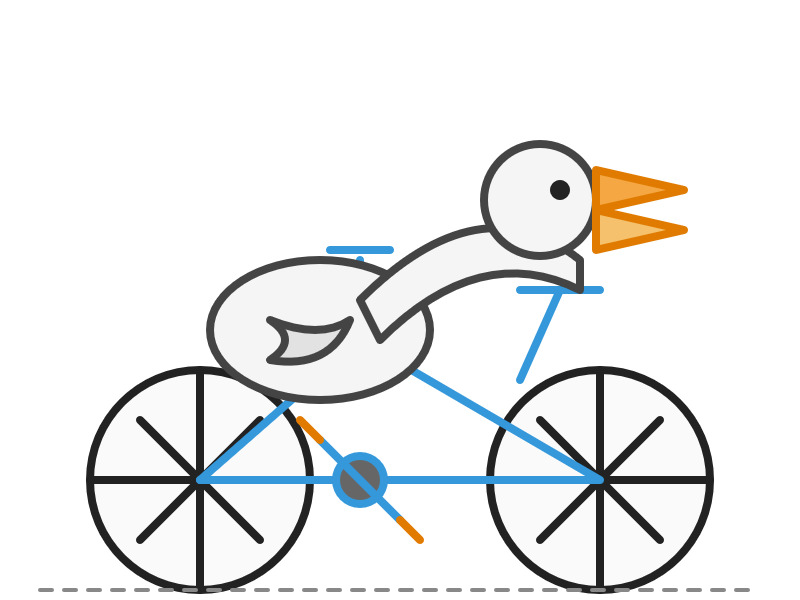
o4-mini:

Here are the full OpenAI model listings: o3 is $10/million input and $40/million for output, with a 75% discount on cached input tokens, 200,000 token context window, 100,000 max output tokens and a May 31st 2024 training cut-off (same as the GPT-4.1 models). It's a bit cheaper than o1 ($15/$60) and a lot cheaper than o1-pro ($150/$600).
o4-mini is priced the same as o3-mini: $1.10/million for input and $4.40/million for output, also with a 75% input caching discount. The size limits and training cut-off are the same as o3.
You can compare these prices with other models using the table on my updated LLM pricing calculator.
A new capability released today is that the OpenAI API can now optionally return reasoning summary text. I've been exploring that in this issue. I believe you have to verify your organization (which may involve a photo ID) in order to use this option - once you have access the easiest way to see the new tokens is using curl like this:
curl https://api.openai.com/v1/responses \
-H "Content-Type: application/json" \
-H "Authorization: Bearer $(llm keys get openai)" \
-d '{
"model": "o3",
"input": "why is the sky blue?",
"reasoning": {"summary": "auto"},
"stream": true
}'
This produces a stream of events that includes this new event type:
event: response.reasoning_summary_text.delta
data: {"type": "response.reasoning_summary_text.delta","item_id": "rs_68004320496081918e1e75ddb550d56e0e9a94ce520f0206","output_index": 0,"summary_index": 0,"delta": "**Expl"}
Omit the "stream": true and the response is easier to read and contains this:
{
"output": [
{
"id": "rs_68004edd2150819183789a867a9de671069bc0c439268c95",
"type": "reasoning",
"summary": [
{
"type": "summary_text",
"text": "**Explaining the blue sky**\n\nThe user asks a classic question about why the sky is blue. I'll talk about Rayleigh scattering, where shorter wavelengths of light scatter more than longer ones. This explains how we see blue light spread across the sky! I wonder if the user wants a more scientific or simpler everyday explanation. I'll aim for a straightforward response while keeping it engaging and informative. So, let's break it down!"
}
]
},
{
"id": "msg_68004edf9f5c819188a71a2c40fb9265069bc0c439268c95",
"type": "message",
"status": "completed",
"content": [
{
"type": "output_text",
"annotations": [],
"text": "The short answer ..."
}
]
}
]
}
openai/codex. Just released by OpenAI, a "lightweight coding agent that runs in your terminal". Looks like their version of Claude Code, though unlike Claude Code Codex is released under an open source (Apache 2) license.
Here's the main prompt that runs in a loop, which starts like this:
You are operating as and within the Codex CLI, a terminal-based agentic coding assistant built by OpenAI. It wraps OpenAI models to enable natural language interaction with a local codebase. You are expected to be precise, safe, and helpful.
You can:
- Receive user prompts, project context, and files.
- Stream responses and emit function calls (e.g., shell commands, code edits).
- Apply patches, run commands, and manage user approvals based on policy.
- Work inside a sandboxed, git-backed workspace with rollback support.
- Log telemetry so sessions can be replayed or inspected later.
- More details on your functionality are available at codex --help
The Codex CLI is open-sourced. Don't confuse yourself with the old Codex language model built by OpenAI many moons ago (this is understandably top of mind for you!). Within this context, Codex refers to the open-source agentic coding interface. [...]
I like that the prompt describes OpenAI's previous Codex language model as being from "many moons ago". Prompt engineering is so weird.
Since the prompt says that it works "inside a sandboxed, git-backed workspace" I went looking for the sandbox. On macOS it uses the little-known sandbox-exec process, part of the OS but grossly under-documented. The best information I've found about it is this article from 2020, which notes that man sandbox-exec lists it as deprecated. I didn't spot evidence in the Codex code of sandboxes for other platforms.
GPT-4.1: Three new million token input models from OpenAI, including their cheapest model yet
OpenAI introduced three new models this morning: GPT-4.1, GPT-4.1 mini and GPT-4.1 nano. These are API-only models right now, not available through the ChatGPT interface (though you can try them out in OpenAI’s API playground). All three models can handle 1,047,576 tokens of input and 32,768 tokens of output, and all three have a May 31, 2024 cut-off date (their previous models were mostly September 2023).
[... 1,124 words]Believing AI vendors who promise you that they won't train on your data is a huge competitive advantage these days.
Using LLMs as the first line of support in Open Source (via) From reading the title I was nervous that this might involve automating the initial response to a user support query in an issue tracker with an LLM, but Carlton Gibson has better taste than that.
The open contribution model engendered by GitHub — where anonymous (to the project) users can create issues, and comments, which are almost always extractive support requests — results in an effective denial-of-service attack against maintainers. [...]
For anonymous users, who really just want help almost all the time, the pattern I’m settling on is to facilitate them getting their answer from their LLM of choice. [...] we can generate a file that we offer users to download, then we tell the user to pass this to (say) Claude with a simple prompt for their question.
This resonates with the concept proposed by llms.txt - making LLM-friendly context files available for different projects.
My simonw/docs-for-llms contains my own early experiment with this: I'm running a build script to create LLM-friendly concatenated documentation for several of my projects, and my llm-docs plugin (described here) can then be used to ask questions of that documentation.
It's possible to pre-populate the Claude UI with a prompt by linking to https://claude.ai/new?q={PLACE_HOLDER}, but it looks like there's quite a short length limit on how much text can be passed that way. It would be neat if you could pass a URL to a larger document instead.
ChatGPT also supports https://chatgpt.com/?q=your-prompt-here (again with a short length limit) and directly executes the prompt rather than waiting for you to edit it first(!)
Stevens: a hackable AI assistant using a single SQLite table and a handful of cron jobs. Geoffrey Litt reports on Stevens, a shared digital assistant he put together for his family using SQLite and scheduled tasks running on Val Town.
The design is refreshingly simple considering how much it can do. Everything works around a single memories table. A memory has text, tags, creation metadata and an optional date for things like calendar entries and weather reports.
Everything else is handled by scheduled jobs to popular weather information and events from Google Calendar, a Telegram integration offering a chat UI and a neat system where USPS postal email delivery notifications are run through Val's own email handling mechanism to trigger a Claude prompt to add those as memories too.
Here's the full code on Val Town, including the daily briefing prompt that incorporates most of the personality of the bot.
Slopsquatting -- when an LLM hallucinates a non-existent package name, and a bad actor registers it maliciously. The AI brother of typosquatting.
Credit to @sethmlarson for the name
CaMeL offers a promising new direction for mitigating prompt injection attacks
In the two and a half years that we’ve been talking about prompt injection attacks I’ve seen alarmingly little progress towards a robust solution. The new paper Defeating Prompt Injections by Design from Google DeepMind finally bucks that trend. This one is worth paying attention to.
[... 2,052 words]